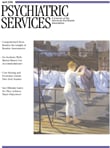Treatment: "Just What the Preacher Ordered"
Many mental health providers have not comprehended the impact that the clergy has on shaping social norms that influence willingness to seek treatment. Clergy members have myriad opportunities to influence social norms about mental health issues when they deliver sermons and conduct informal counseling. These may range from language that influences explanatory models of symptoms commonly associated with psychiatric disorders by describing them as "spiritual performance measures" that reflect "contaminated faith," proximity to God or the devil, or personal culpability to recommendations that encourage use of spiritual coping strategies in lieu of treatment.
The clergy's sphere of influence has expanded exponentially through multimedia. For instance, Daystar Television, the second-largest Christian broadcasting network, reports having a potential audience of more than 128 million viewers in the United States alone, including 60 million cable and satellite households. This is further underscored by an April 2003 survey disclosing an aggregate adult U.S. audience for Christian programming of 90 million people.
Clergy members have been an untapped resource in the effort to reduce mental health disparities. In part, they have not been enlisted in the effort because of their differing, sometimes conflicting, explanatory models of symptoms. However, individuals with mental illness frequently identify clergy members as their initial contacts when they decide to seek help.
In this issue of Psychiatric Services, Farrell and Goebert report on a survey of clergy in Hawaii that found that few clergy members made referrals to psychiatrists partly because of their limited ability to identify serious psychiatric conditions. Finding a way to bridge the gap and work synergistically with these credible, "divinely endorsed" gatekeepers who have a global sphere of influence may be "just what the doctor ordered" to change social norms and reduce stigma. Yet the consumer may be more concerned with a different question: "Is this treatment 'just what the preacher ordered?' "
To reduce disparities, public health educators seek to develop community interventions that will reach the general public. A critical factor may be with whom they are willing to collaborate. Given the clergy's role in shaping social norms and influencing large audiences, nurturance of relationships with these gatekeepers by the public health community may be imperative in improving help-seeking behaviors and in facilitating earlier detection and treatment. Modest investments of resources in partnership ventures with clergy may encourage more people to obtain professional help by providing options for treatment their way—spiritually infused and clergy approved.



